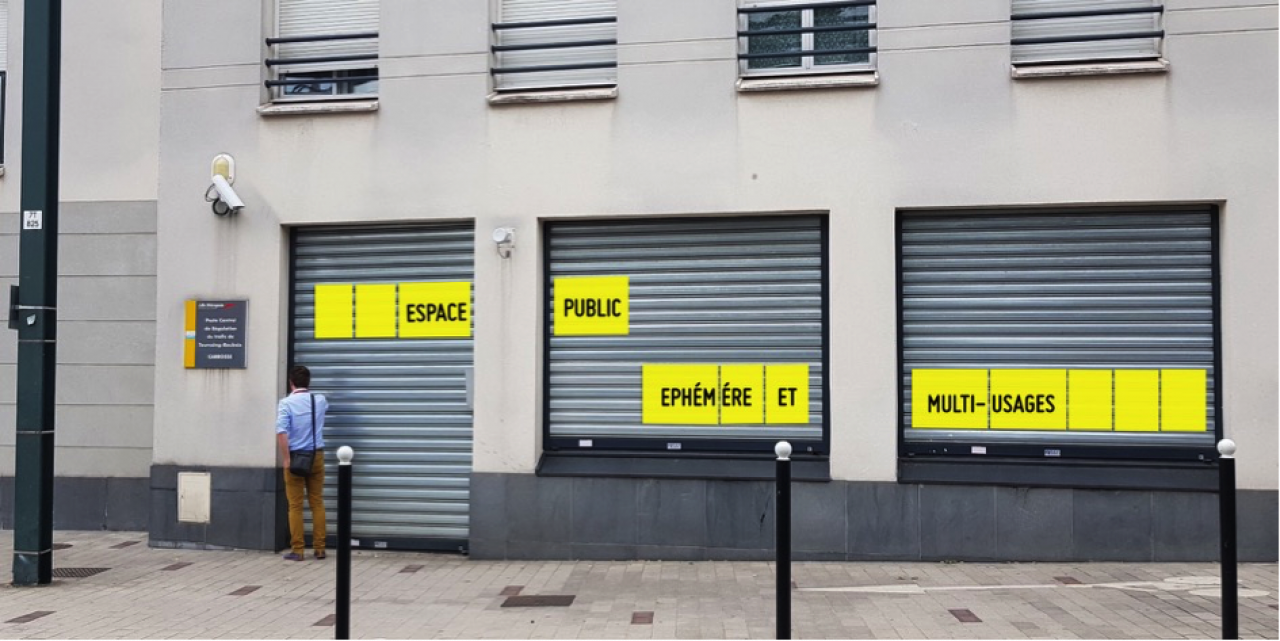
URBACT lead expert, François Jégou, explains how TRANSFO LILLE, a process of co-construction of a public policy design lab led in the European Metropole of Lille (FR) gave the Metropole’s civil servants a real appetite to foster the development of temporary uses of vacant spaces.
François Jégou was lead expert of the URBACT REFILL network. He is also part of the Republic of Design, Lille's organising committee for the world design capital 2020.
Learning from the the European Metropole of Lille's Public Policy Design Lab
Contrary to projects that succeed one another without a future, this article describes a modest, yet successful case from the REFILL URBACT network on temporary use of vacant spaces. It draws on the example of the TRANSFO LILLE process, led in the European Metropole of Lille from September 2018 to June 2019.
In this article, we seek to learn how public services and policies can be transformed through design, and define what they can bring to the URBACT method.
A working group on temporary use
"Industrial wasteland, unused offices, unoccupied dwellings, etc. - all categories combined, the European Metropole of Lille (MEL) counts more than 5 000 spaces (some of which are still vacant) and, save special cases, no public policy on temporary use" says Claire Obré, Project Manager in Economy and Employment at the Metropole of Lille, and lead of the design lab working group.
The primary objective is to ensure that temporary use will be possible, either by internal management or through a third-party. There is temporary occupation on the territory of the Metropole, but nothing organised with its own vacant properties.
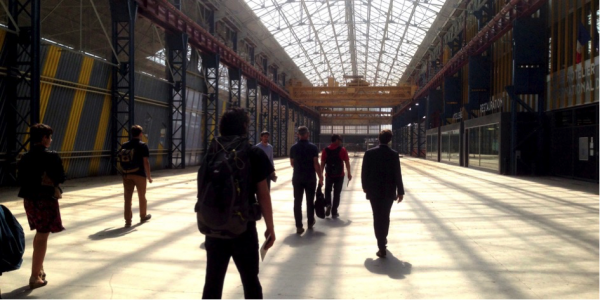
The Working Group on Temporary Use is working with the Directory of Economic Development, Property & Agriculture and is looking for an operational organisation on this issue.
"Temporary use is a cultural change, adds Claire Obré, and I feel that internally we are not equipped for it and that our elected officials are not comfortable with these questions."
Laboratory design of public policy
A process of “action-research” called LA TRANSFO LILLE - for transformation of public action - was conducted by 20 civil servants accompanied by 4 designers and project managers "in residence" at the Metropole of Lille (2 to 3 days per month) over a period of 18 months. This process was supported and implemented by the association La 27e Région including Dunkerque, Lille, Metz, Mulhouse, Occitanie Region, Strasbourg and Paris.
In this case, "action-research" meant pretending that the public policy design lab was already operational, working together with residents and civil servant ambassadors on several pilot projects (the forming lab) and finally inferring gradually from this series of experiments, it brought to the design of the future lab.
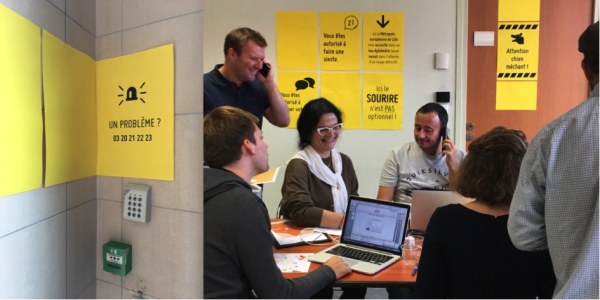
After conducting a first practical case to redesign under-used territorial public policies in eco-renovation, the forming lab proposed to undertake as second practical case: drafting a policy of temporary use together with the working group.
To do this, a work program was agreed with the forming lab team.
4 activities were to be carried out in parallel in fall 2018, in order to issue an action plan for deliberation by the elected representatives early 2019 including:
- Phase 1 – Listening
A phase for listening to diverse temporary use experiments on the territory (eg. a brownfield site, an open field, an abandoned housing, etc.) and a "user journey" mapping key steps followed by a candidate for temporary use;
- Phase 2 - Experimentation
A phase of experimentation in a vacant space to develop visions of what different types of temporary use of this space could look like to test them in real situations;
- Phase 3 - Capitalisation and research
Gathering inspiring practices in the region and beyond, to stimulate the processes and build a number of references to acculturate the Metropole services and the elected representatives to temporary use;
- Phase 4 – Synthesis
Co-creating different scenarios to set up a support system for temporary use of vacant spaces inside or outside the MEL, offering a more or less wide range of services, technical, financial, etc. with the working group on temporary use.
Immersion in the issue
To become immersed in the subject, the forming lab temporarily moved to the Condition Publique, a former factory in the neighbourhood of Pile, in Roubaix (FR). A “walking diagnosis” was organised through the neighbourhood, a metropolitan area particularly affected by mass unemployment and the depletion of its population - symptomatic of urban vacancy.
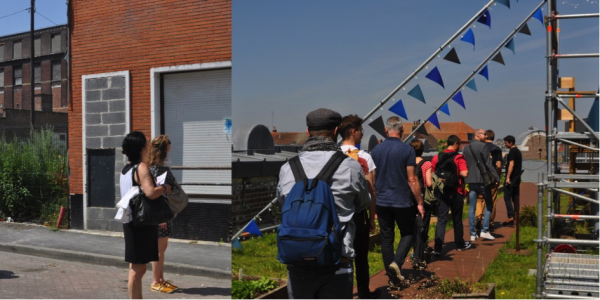
Throughout this urban walk, the members of the forming lab immersed themselves in the problem, photographed and recorded their astonishment: vacancy is both a symptom and a participating element in dysfunctional social and urban dynamics.
Questions raised
How can we match the demand and the supply of vacant spaces?
Once the period of temporary use is over, what happens to the initiative ?
Who are the stakeholders in the administration of the Metropole and how do we obtain their help to set up a temporary use project?
Does the revalorisation of a disadvantaged neighbourhood by this type of initiative lead to de facto increasing rents and, thus, gentrification?
How can we make construction and safety standards that apply to permanent spaces compatible with temporary use of only a few months?
Experimenting temporary use: learning from URBACT cities
Some answers to the preceeding questions were provided by looking at other European cities' experiences.
"In Ghent (BE), we started with two iconic temporary use projects to demonstrate the feasibility and interest to our elected officials and to give the city administration a first concrete experience" says Emma Tydgat, from the policy participation unit and coordinator of the REFILL network. The idea to start with a demonstrator before building a public policy was noted by the lab's participants.

In Poznan (PL), the city planned to install an administration office in an empty shop to better understand the vacancy issue in some streets – thereby being at the very heart of the problem.
The lab further explored the hypothesis of temporary use by the metropolitan services themselves. How can different parts of a local government use their own vacant properties to accommodate "temporary outposts" of their own services nearer to the citizens? For example: work placement projects close to young people; citizens participation workshops; educational initiatives on sustainable and responsible citizenship; demonstrators of energy renovation and of course, the public policy design lab in field immersion...
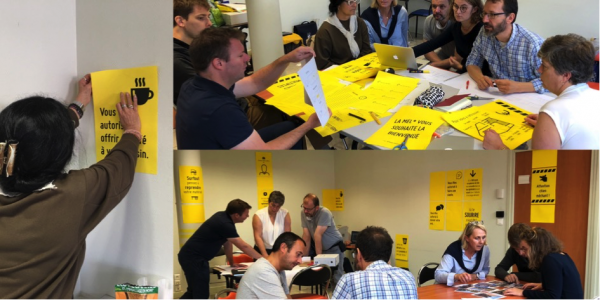
The lab then had its own first hand experiences by moving to a former traffic control room in Tourcoing (FR) on the outskirts of Lille. By delivering a few tables and chairs the space unused for several years turned into a “temporary public policy design lab".
The twenty civil servants on the spot experienced the difficulties faced by applicants for temporary use first hand. The ambassadors then revisited the former traffic control room with a view to equip it better to facilitate its temporary use.
The lab also put together a "public space ephemeral good use toolkit” with three scenarios for the Metropole to open spaces to third party users:
- the Metropole uses the space for its own services;
- the Metropole and a group of associations and partners share the use of the space;
- the Metropole makes the space available to a third party who manages it.
The field–driven, hands-on approach of the lab resulted in the team getting a good grasp of temporary use issues and gave the Metropole’s civil servants a real appetite to foster its development.
***
To learn more about how “policy design labs” and URBACT exchange networks may cross-fertilise, read REFILL@Lille, Part 2: Building on REFILL experience. It showcases lessons learned from this tangible experience and explores the knowledge capitalised on by the URBACT REFILL network.
Find out more more about reusing vacant spaces on Remakingthecity.urbact.eu!

